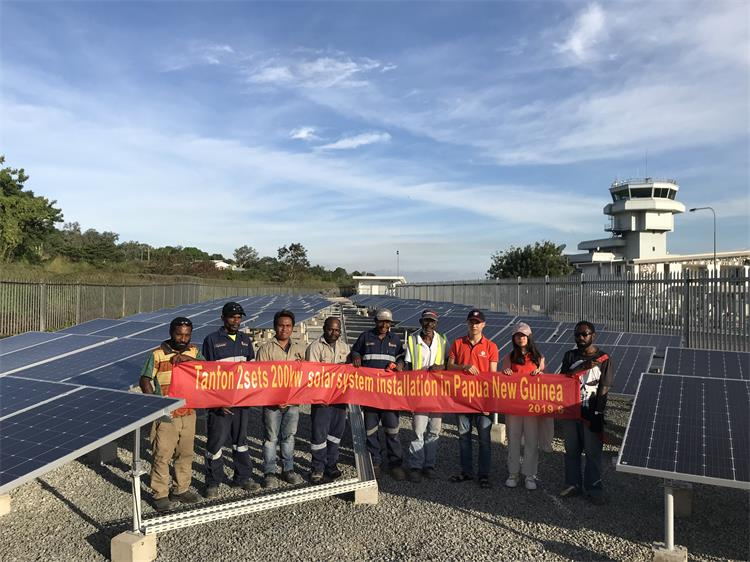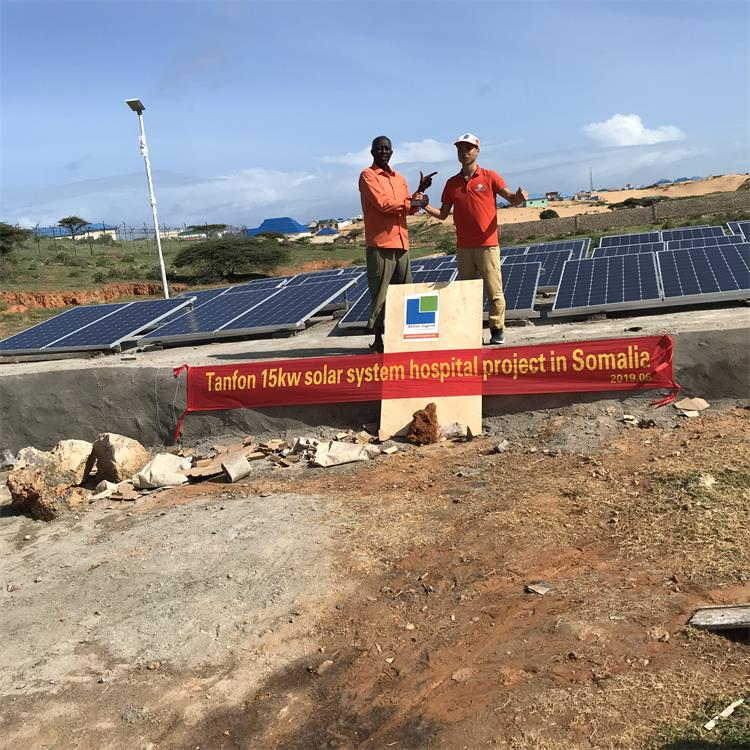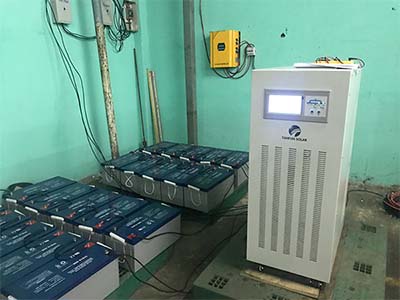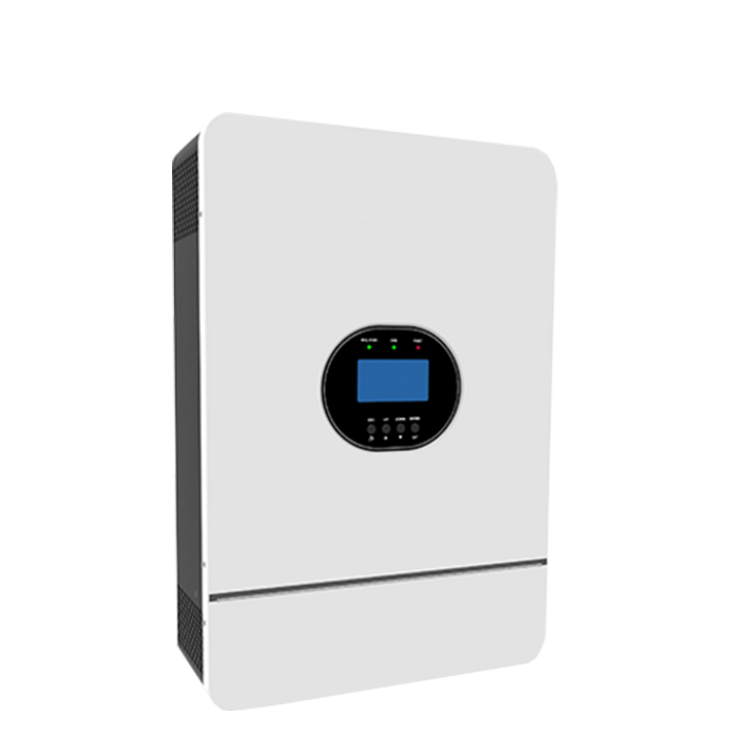 TANFON SOLAR
TANFON SOLAR
 July 21,2020
July 21,2020
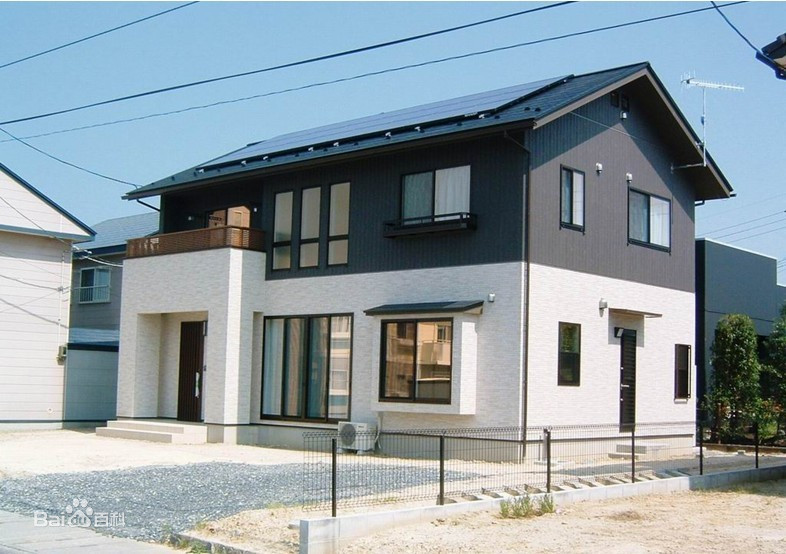
Load appliance name Specification model Power consumption Quantity Daily working hours Daily power consumption
Load appliance name Specification model Power consumption Quantity Daily working hours Daily power consumption
Lighting Energy-saving lamp 11W 8 6 528W
Computer LCD display 150W 2 8 1000W
Refrigerator 150L 100W 1 24 800W
Washing machine 550W 1 1 550W
Microwave oven 1000W 1 2 2000W
Air conditioner 1.5P 1200W 1 4 4800W
Satellite antenna 50W 1 6 300W
Color TV 21LCD 150W 1 6 900W
Water pump 400W 1 2 800W
Total 3838W 11678W
Remarks: The output power and configuration of the inverter can be adjusted according to the user's actual electrical power and time
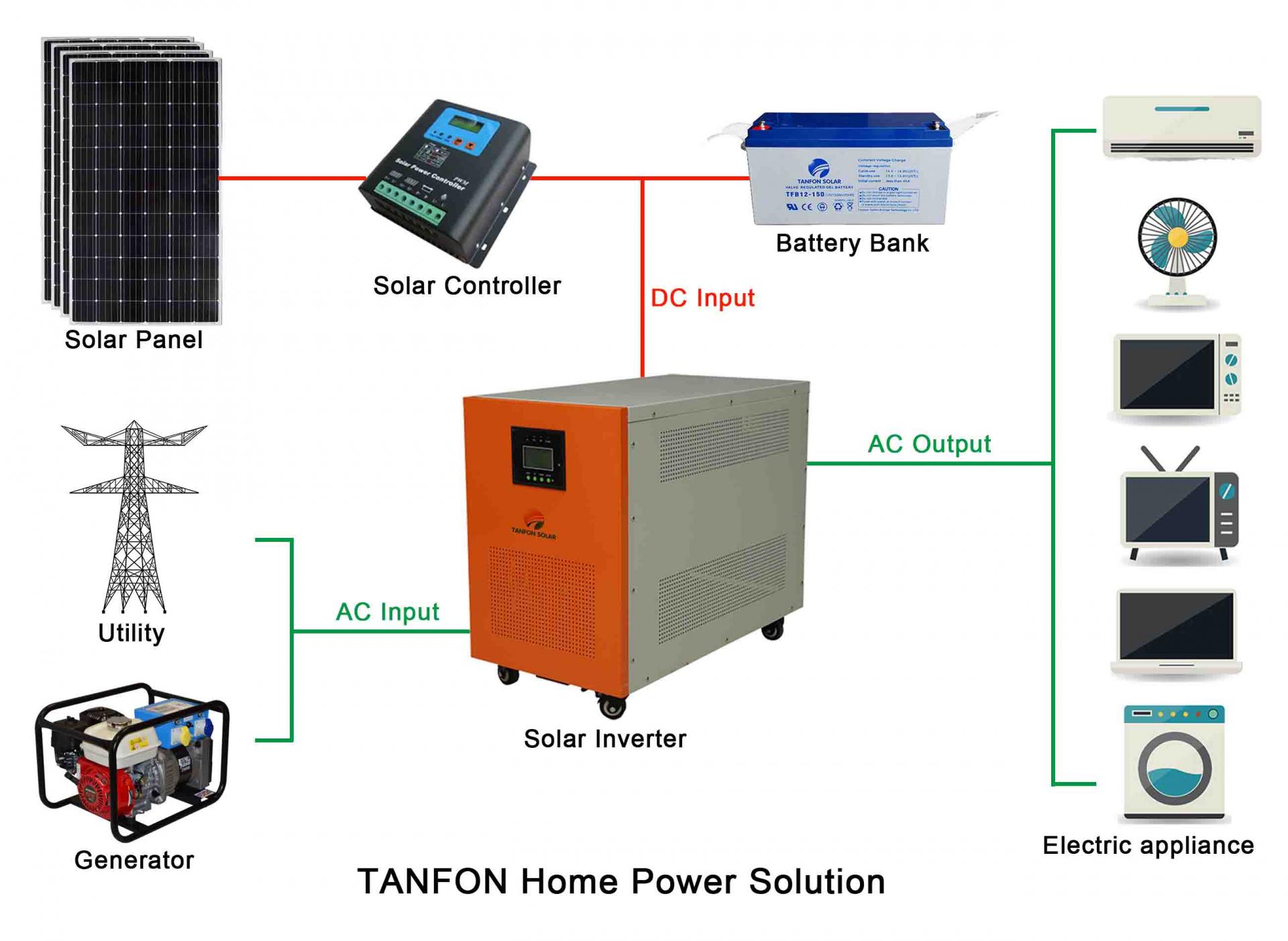
advantage
(1). The residentail solar energy is simple in structure, small and light, easy to use, and maintenance-free;
(2). Easy installation, easy transportation, short construction period, stable and reliable solar power system, one-time investment, long-term benefit;
(3). No radiation, no pollution, energy saving and environmental protection, clean energy, safe operation, no noise, zero emission, low-carbon fashion;
(4). The quality is reliable, the product life is long, and the service life of solar panels is at least 25 years;
(5). Solar energy is almost everywhere, so photovoltaic power generation has a wide range of applications.
(6). High photoelectric conversion efficiency, large power generation per unit area.
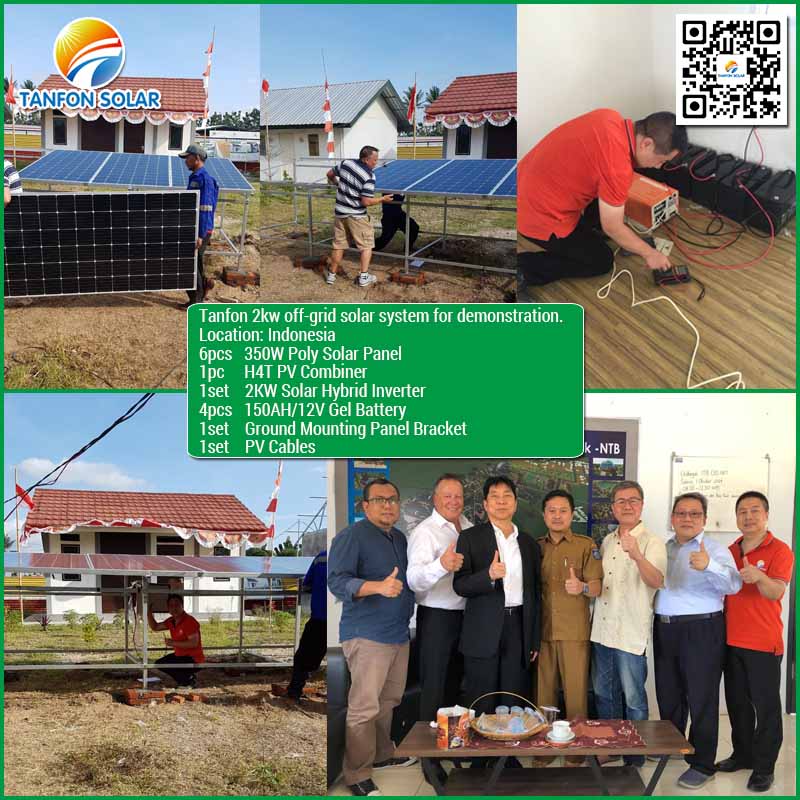
The composition of home solar system
The solar photovoltaic power generation system is mainly composed of solar panels, solar controllers, maintenance-free lead-acid batteries and AC and DC inverters as its main components. The core components are photovoltaic battery packs and controllers. The role of each component in the system is:
1. Solar panel: The solar panel is the core part of the solar power system and the most valuable part of the solar power system. Its function is to convert the sun's radiation capacity into electric energy, or send it to the storage battery for storage, or to drive the load to work.
2. Solar controller: The function of the solar controller is to control the working state of the entire system, and to protect the battery from overcharge and over discharge. In places with large temperature differences, a qualified controller should also have the function of temperature compensation. Other additional functions such as light control switch and time control switch should be optional for the controller;
3. Batteries: generally lead-acid batteries, nickel-hydrogen batteries, nickel-cadmium batteries or lithium batteries can also be used in small and micro systems. Its function is to store the electrical energy generated by the solar panel when there is light, and then release it when needed.
4. Inverter: The direct output of solar energy is generally 12VDC, 24VDC, 48VDC. In order to provide electrical energy to 220VAC electrical appliances, the DC power generated by the solar power generation system needs to be converted into AC power, so a DC-AC inverter is required.
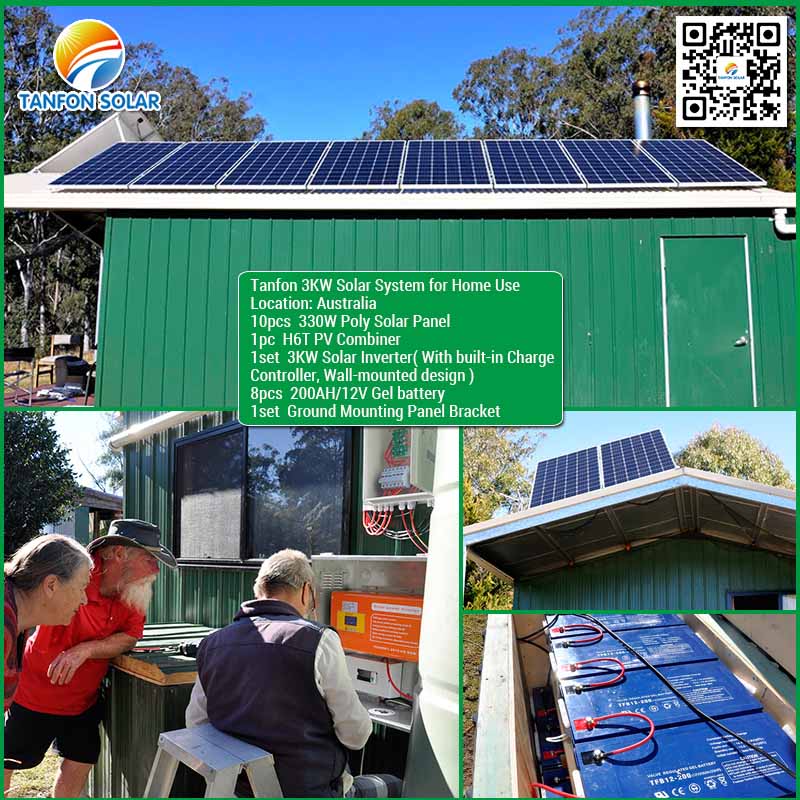
Factors to consider
1. Where is the solar power system used? What is the solar radiation situation in this place?
2. What is the load power of the system?
3. What is the output voltage of the system, DC or AC?
4. How many hours does the system need to work every day?
5. In case of rainy weather without sunlight, how many days does the system need to supply power continuously?
6. What is the starting current when the load is purely resistive, capacitive or inductive?
7. The number of system requirements.
Energy conservation
Generally, the calculation of power generation is average, which means that in the calculation of solar energy system, every day is sunny. In this case, there are actually 10 hours of light per day, but the effective light may only be 4 hours in the calculation (this value is different in different regions).
A 1KW solar photovoltaic power station can generally be 1000W*0.7 (the best utilization ratio after various losses) *4 (average daily effective light) = 2800WH (2.8 kWh)
The 1KW solar photovoltaic power station generates an average of 2.8 kWh per day, and can generate a total of 25,550 kWh within a life span of 25 years.

